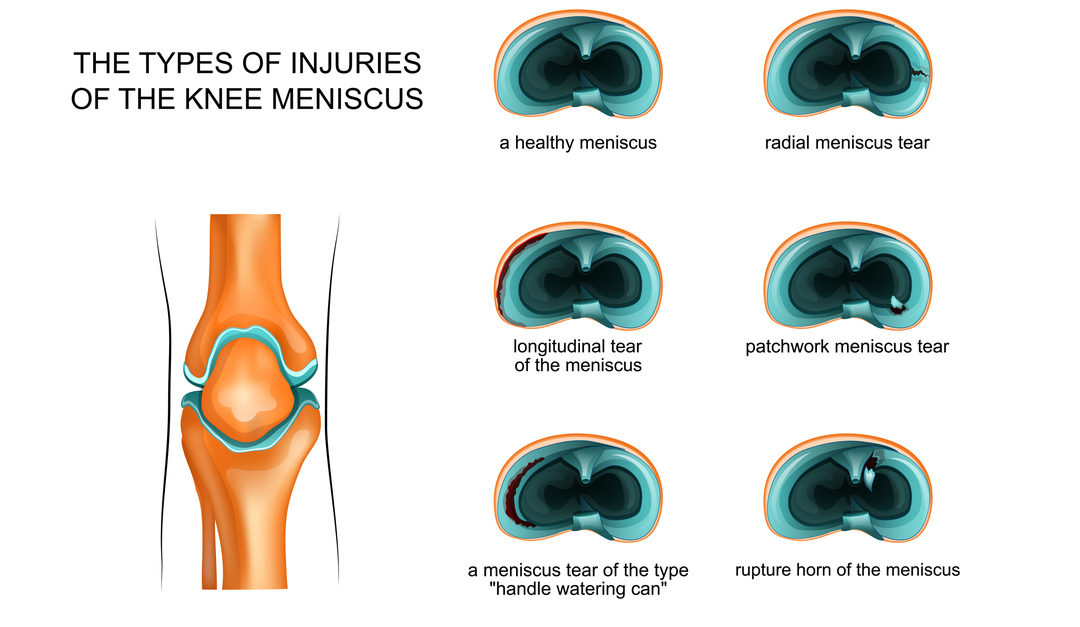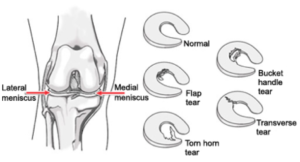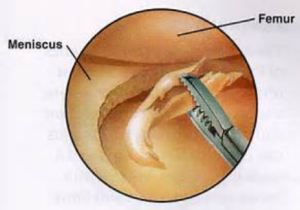The menisci function as the shock absorbers in the knee by forming two wedges of cartilage between the femur and tibia in the knee. Meniscal tears are one of the most common sports-related knee injuries. While most people have heard of them, they don’t know exactly what they are and/or how they’re treated. In order to learn more, let’s talk about how orthopedic surgeons classify and treat meniscus tears. . .
Classifying Meniscus Tears
The meniscus is divided into two regions:
The red zone refers to the outer third of the meniscus. The term red is used to signify that this zone receives some degree of a blood supply. Meniscal tears in this zone can often be repaired.
This is in contrast to the white zone, which refers to the inner two-thirds of the meniscus. Unlike the red zone, the white zone does not receive any significant amount of a blood supply. Tears in the white zone typically will not heal even if an attempt is made to repair them and usually require some form of surgery to remove or cut out the torn portion of the meniscus.
Illustration 1– There can be some overlap in meniscal zones. The red-red and red-white zones receive the most amount of blood.
Meniscus tears can occur medially or laterally (inside or outside menisci) in the red zone, white zone, or in both. There are many types of meniscal tears, but four types of tears that are more frequently encountered include:
- A longitudinal tear (or linear tear) can occurs in the red or white zone
- A bucket handle tear is a vertical tear that can occur in either zone. This type of tear resembles a “bucket handle” and can flip, or fold, into the knee joint causing mechanical blockage and cause locking of the knee.
- A transverse tear is a tear that extends across both zones.
- An anterior or posterior horn tear refers to a tear of the end of the meniscus.
Illustration 2- Three of the four types of meniscus tears. A flap and bucket handle tear can be considered one in the same.
Treatment options are always dependent on the type of meniscus tear and the recommendation of an orthopedic surgeon.
Treating Meniscus Tears
As previously mentioned, the zone that the tear occurs in plays an important role in treatment.
Non-surgical treatment options that are generally used for smaller white zone tears include:
- Rest
- Activity modification
- Physical therapy
- Bracing
Larger tears, or those tears extending across both zones usually require arthroscopic surgery in the form of a:
- The part of the meniscus that is torn is removed.
Illustration 3- The torn meniscus is removed
- Meniscus repair. Suturing or stitching is used to reattach torn pieces and restore the meniscus.
The type of surgery performed is based on an examination of the meniscus in conjunction with preoperative imaging studies such as an MRI.
Contacting an Orthopedic Surgeon
If you’ve sustained a knee injury, please don’t hesitate to contact our office. If your injury is a meniscus tear, you’ll be in great hands and can expect a return to competition/activity.
Dr. Nicholas Alexander is the Founder of Mahwah Valley Orthopedics and a Board Certified Orthopedic Surgeon specializing in both the surgical and non-surgical treatment of hip and knee conditions. Dr. Alexander completed his Fellowship in Adult Reconstruction and Reconstructive Surgery of the Hip and Knee at the Johns Hopkins School of Medicine. He also serves as the Chairman of the Valley Hospital Total Joint Center. Dr. Alexander has offices in Mahwah and Clifton, NJ. If you, or someone you love, is considering treatment for a meniscus tear, contact us today for a consultation.




